Abstract
OBJECTIVE: To address two questions: What are the characteristics of hospitals that affect the likelihood of their being involved in a merger? What characteristics of particular pairs of hospitals affect the likelihood of the pair engaging in a merger? DATA SOURCES/STUDY SETTING: Hospitals in the 12 county region surrounding the San Francisco Bay during the period 1983 to 1992 were the focus of the study. Data were drawn from secondary sources, including the Lexis/Nexis database, the American Hospital Association, and the Office of Statewide Health Planning and Development of the State of California. STUDY DESIGN: Seventeen hospital mergers during the study period were identified. A random sample of pairs of hospitals that did not merge was drawn to establish a statistically efficient control set. Models constructed from hypotheses regarding hospital and market characteristics believed to be related to merger likelihood were tested using logistic regression analysis. DATA COLLECTION: See Data Sources/Study Setting. PRINCIPAL FINDINGS: The analysis shows that the likelihood of a merger between a particular pair of hospitals is positively related to the degree of market overlap that exists between them. Furthermore, market overlap and performance difference interact in their effect on merger likelihood. In an analysis of individual hospitals, conditions of rivalry, hospital market share, and hospital size were not found to influence the likelihood that a hospital will engage in a merger. CONCLUSIONS: Mergers between hospitals are not driven directly by considerations of market power or efficiency as much as by the existence of specific merger opportunities in the hospitals' local markets. Market overlap is a condition that enables a merger to occur, but other factors, such as the relative performance levels of the hospitals in question and their ownership and teaching status, also play a role in influencing the likelihood that a merger will in fact take place.
Full text
PDF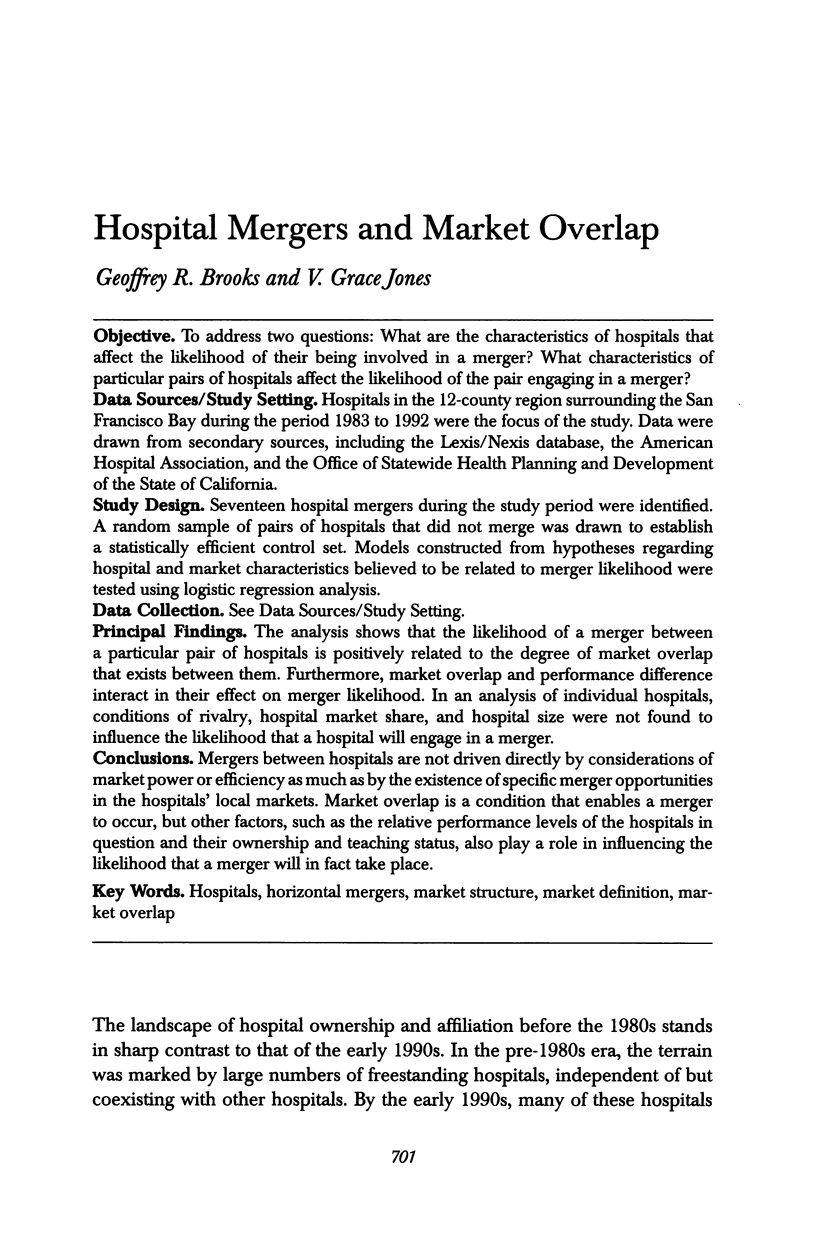
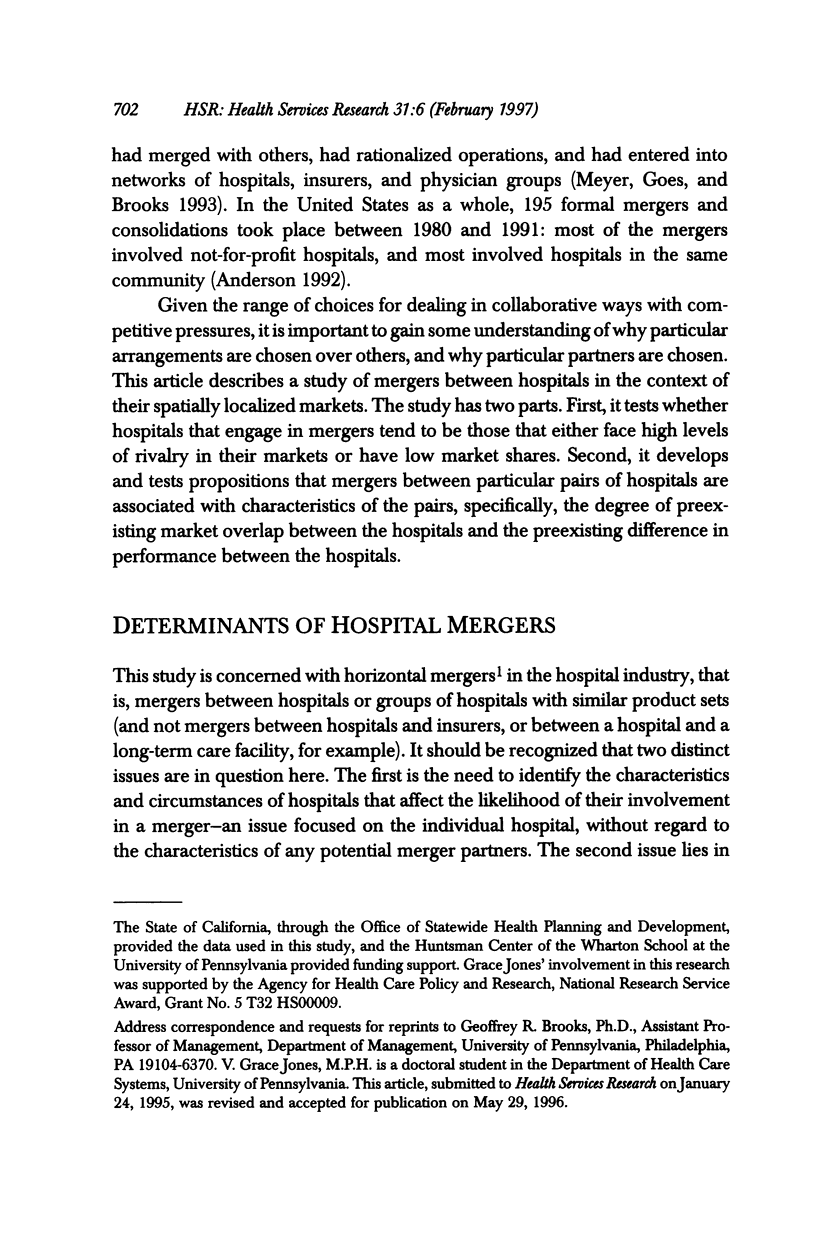
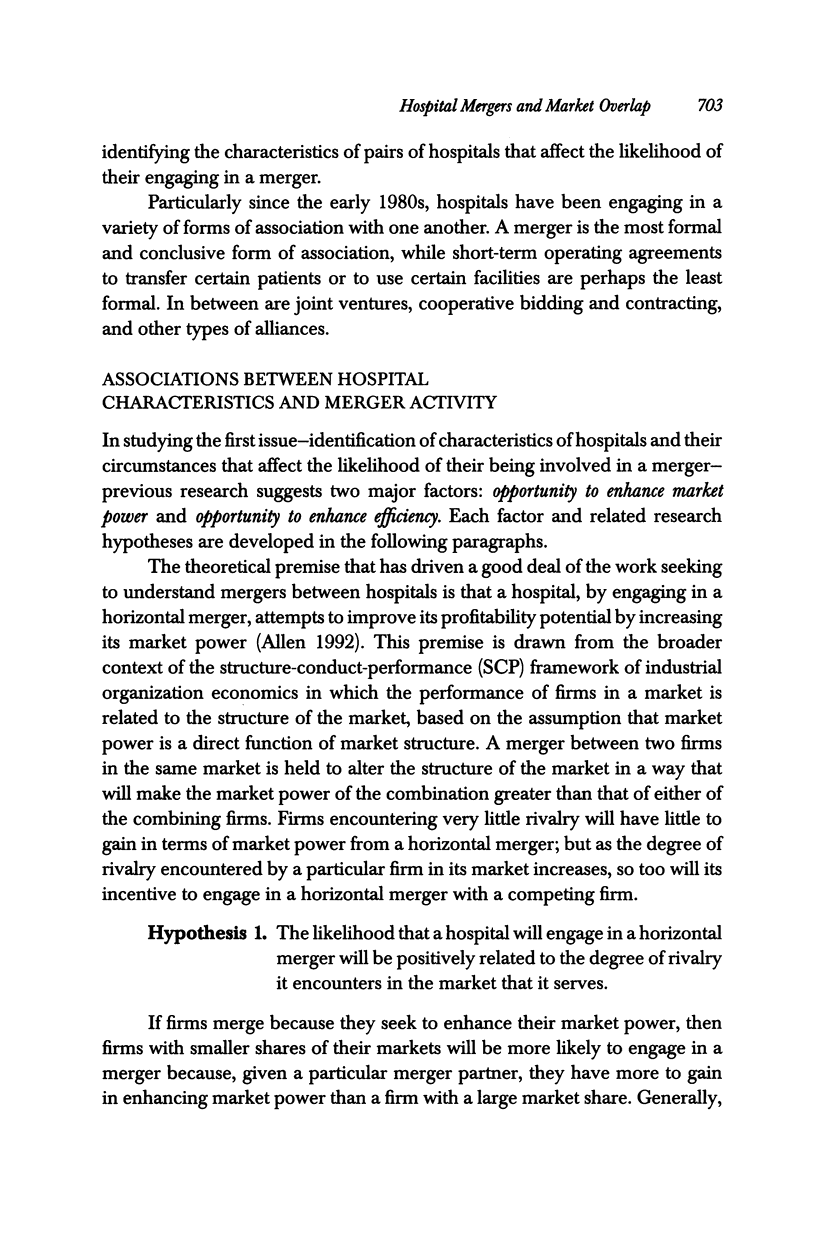
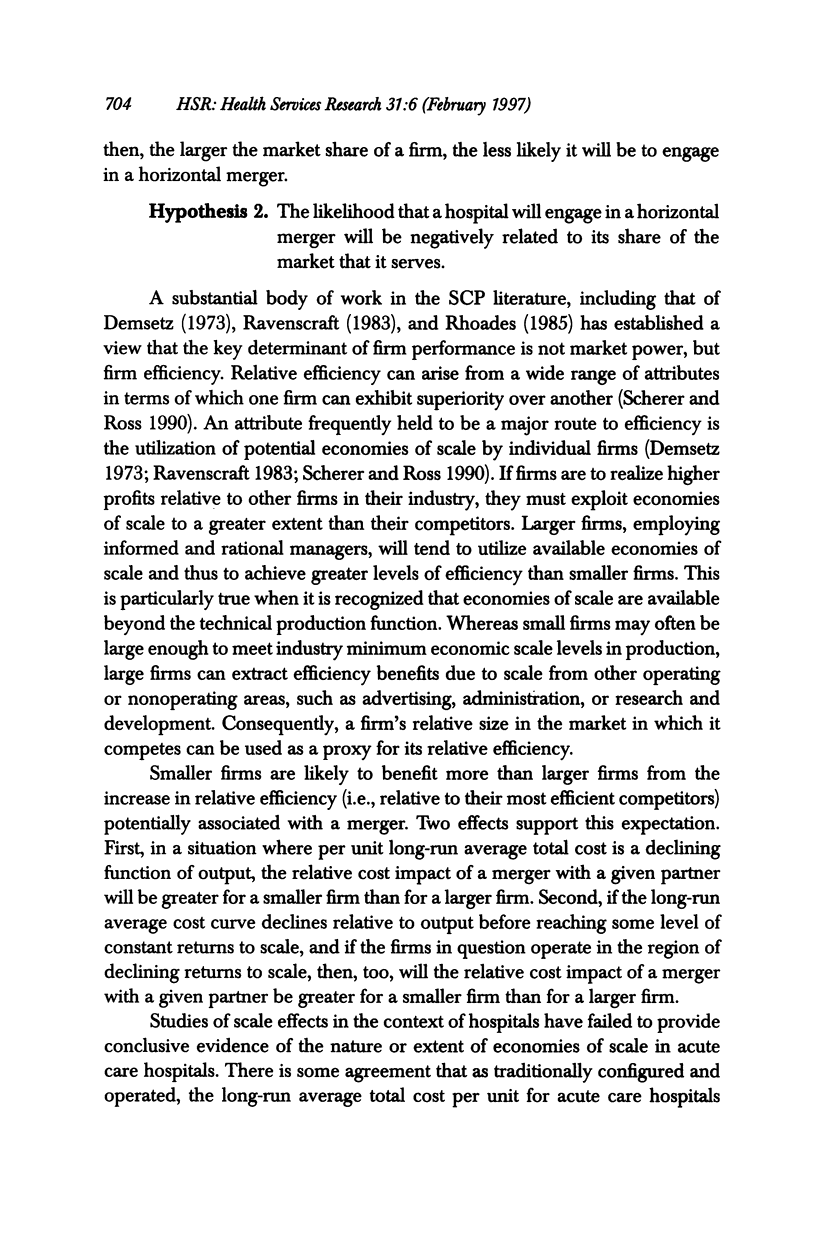
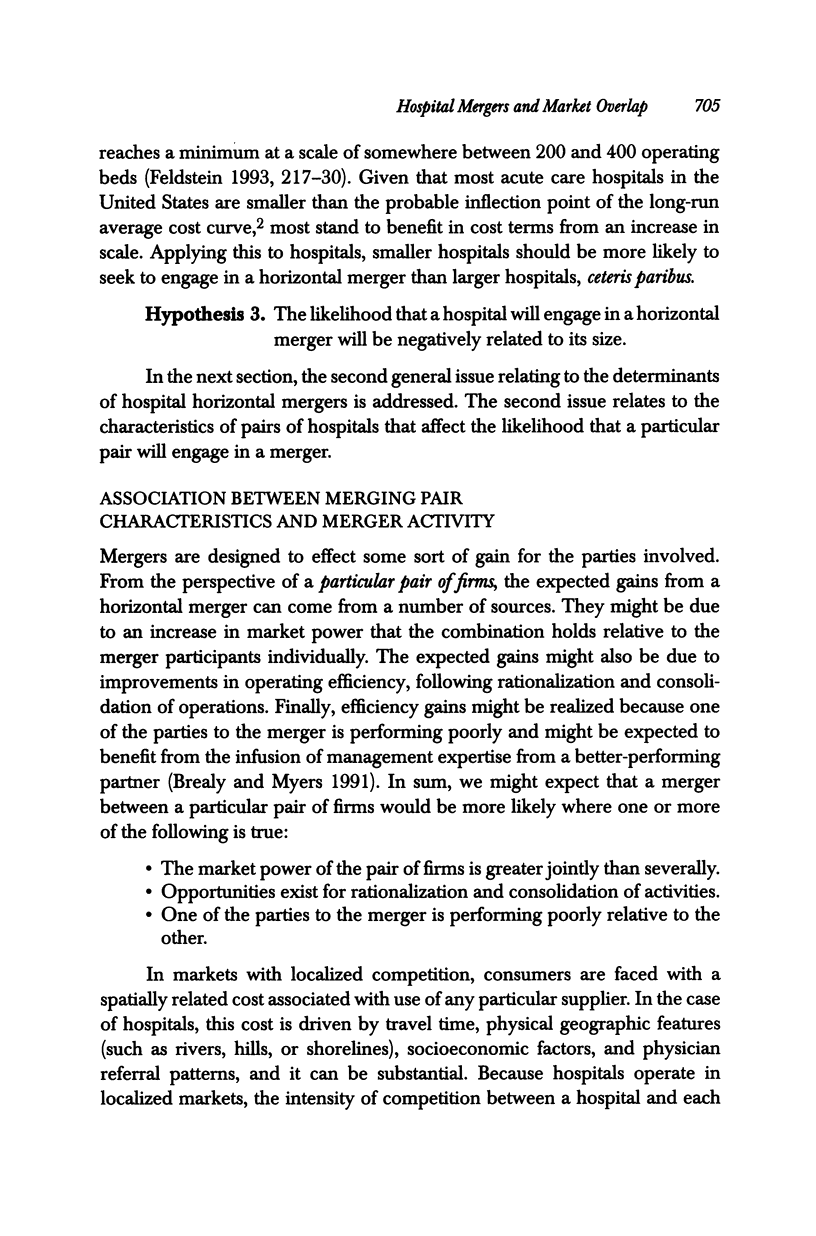
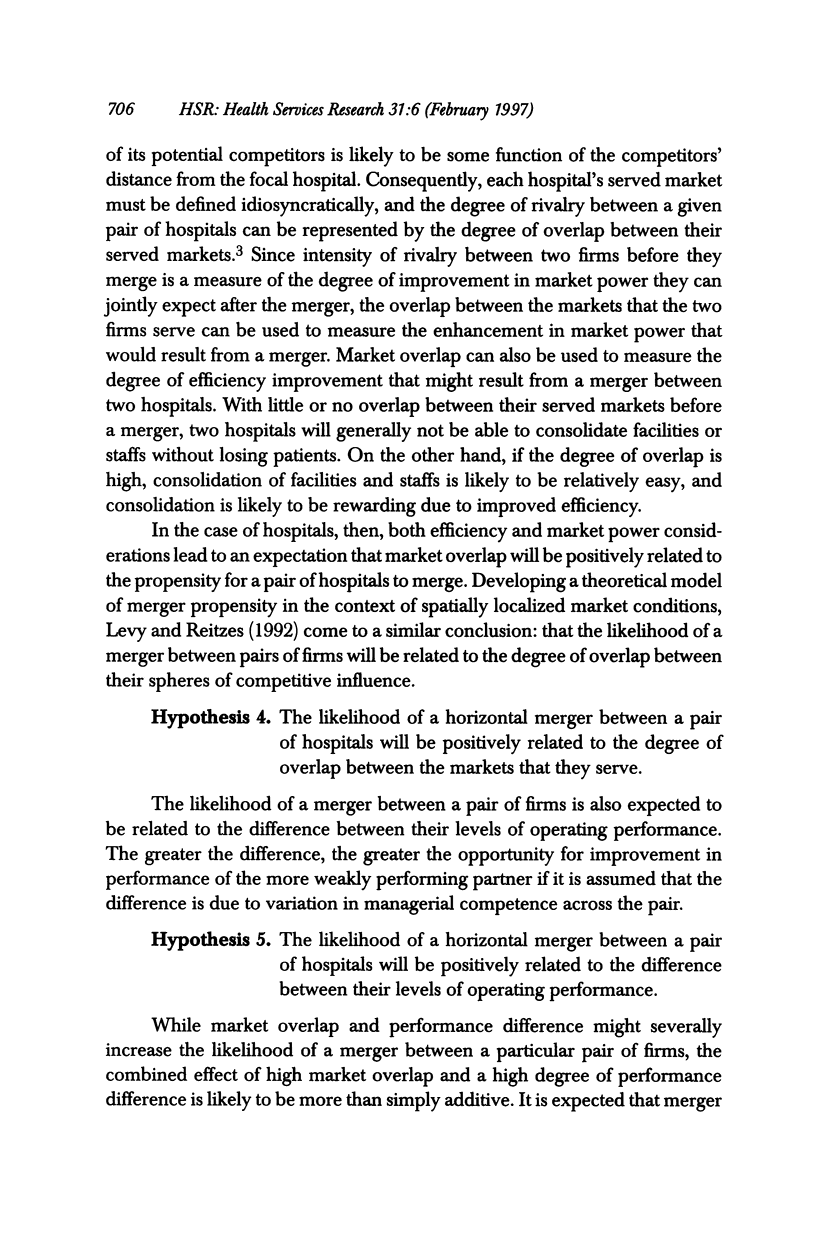
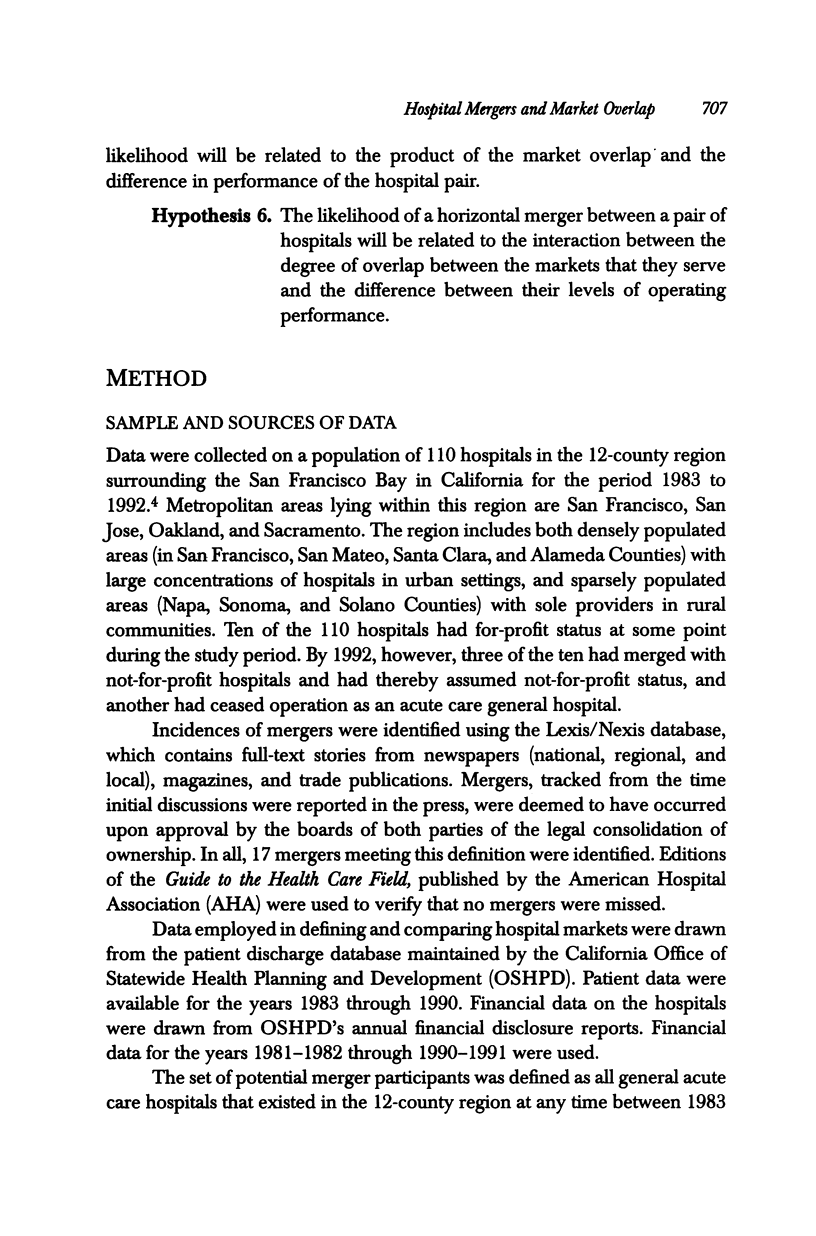
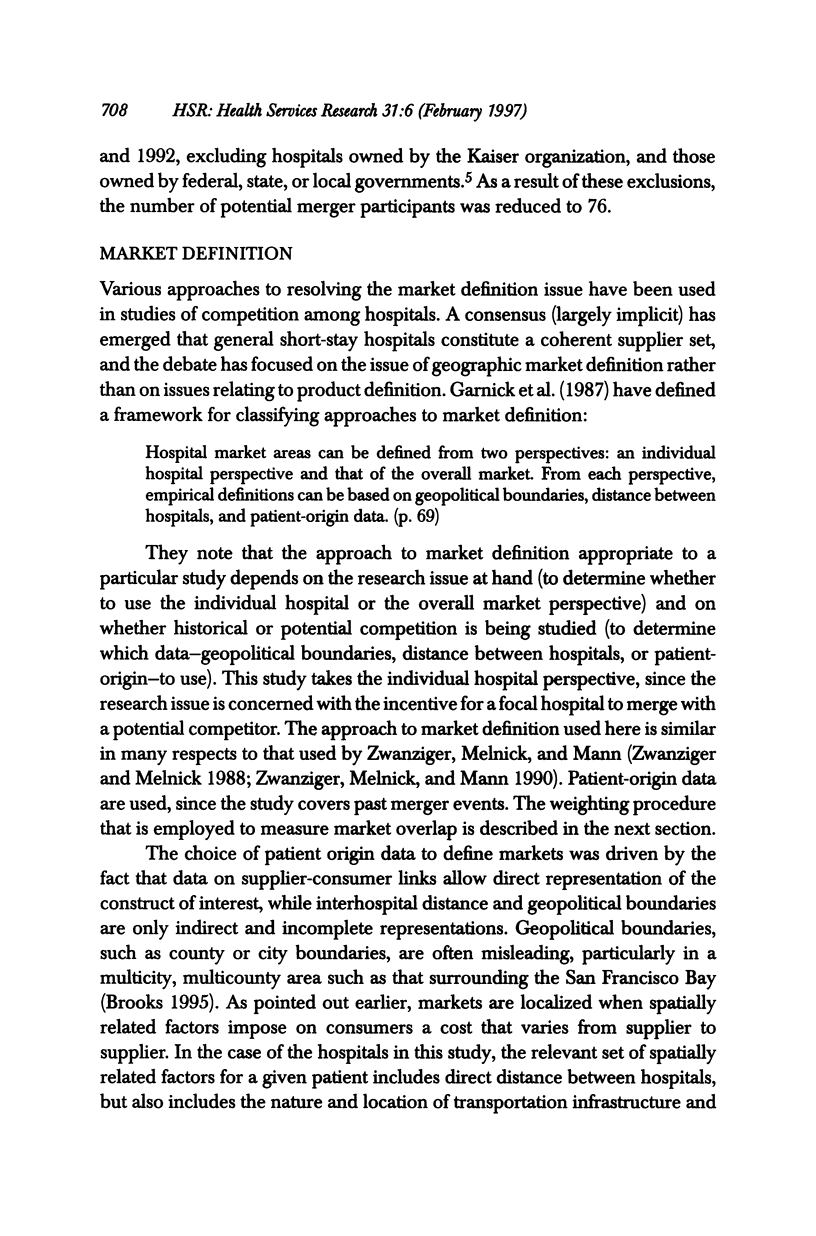
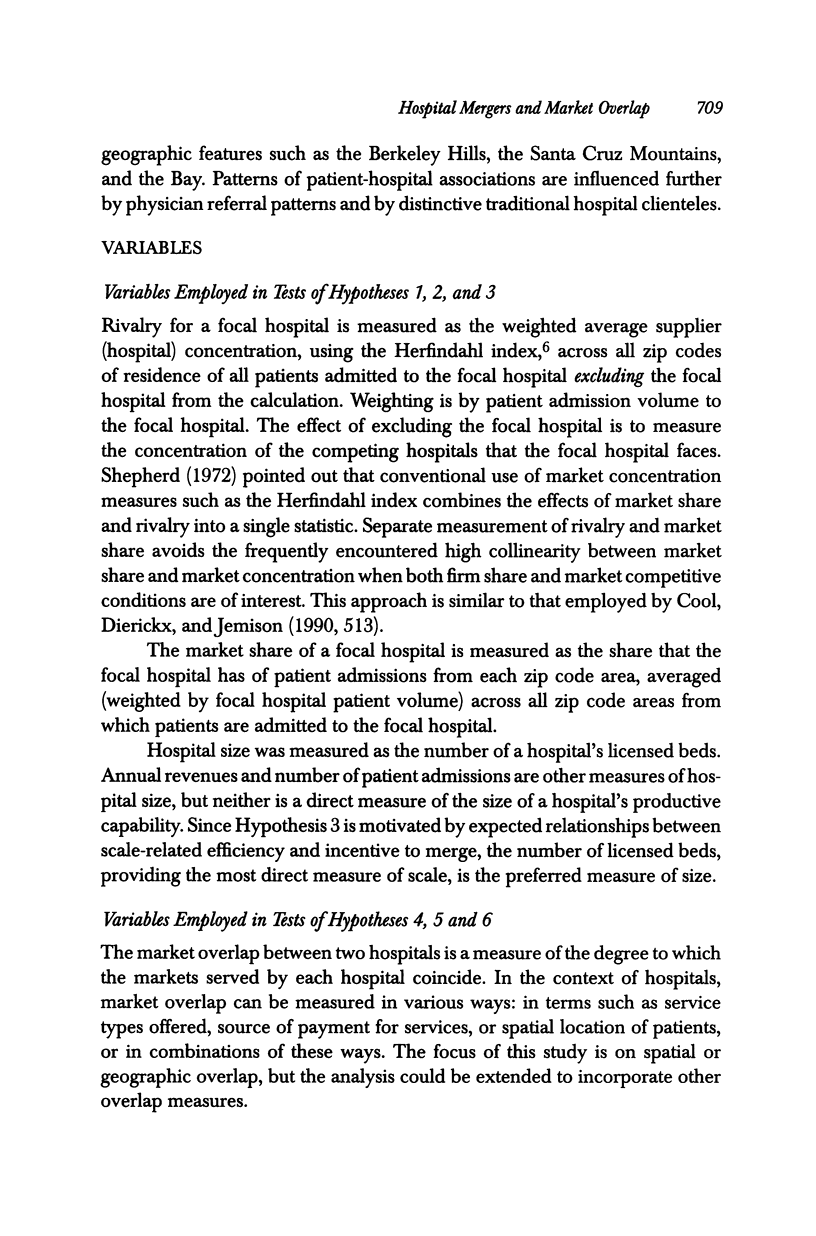
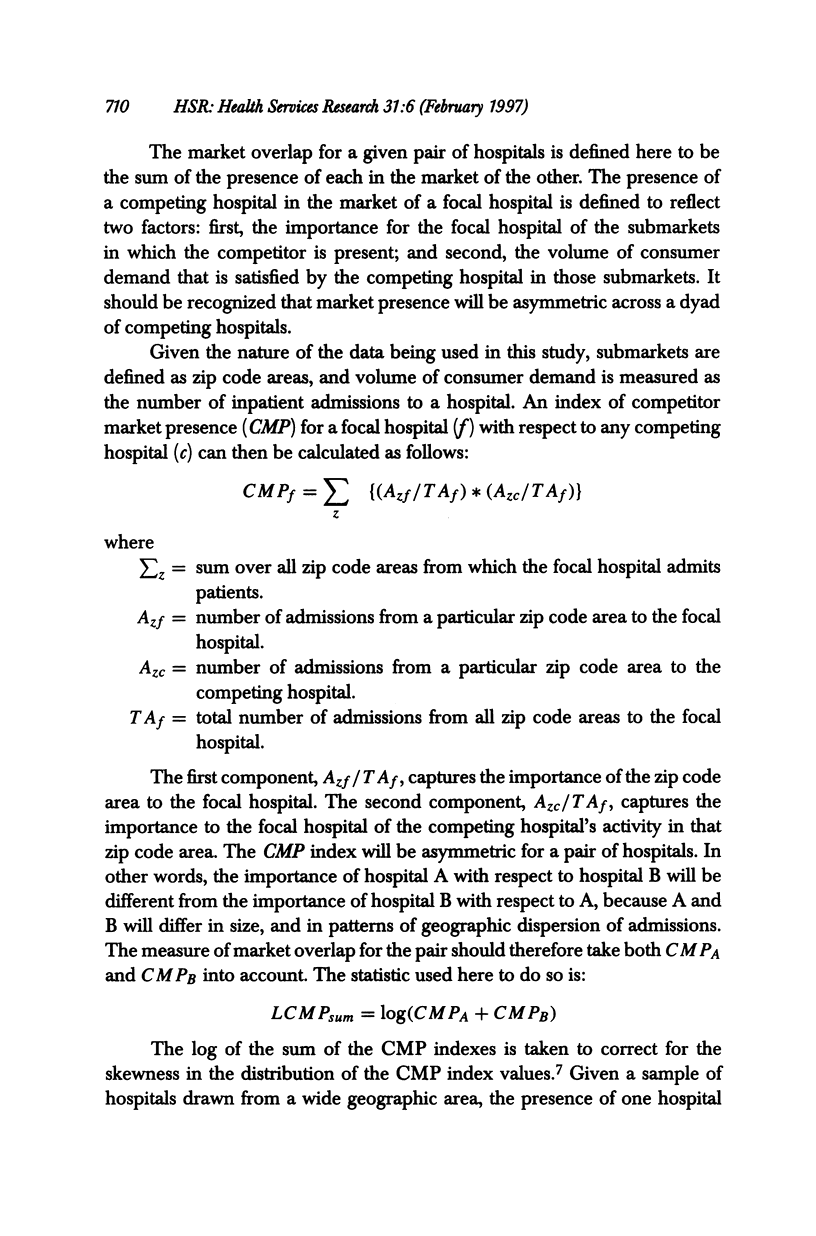
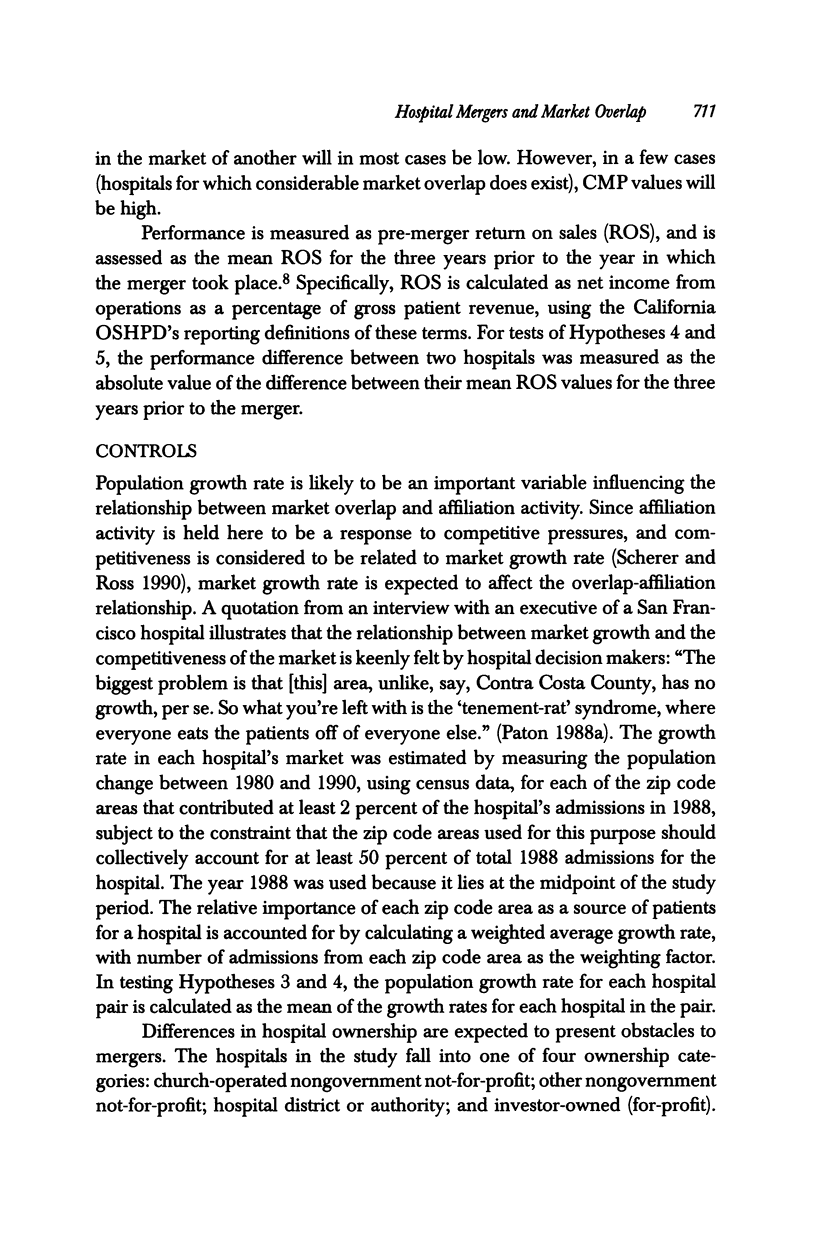
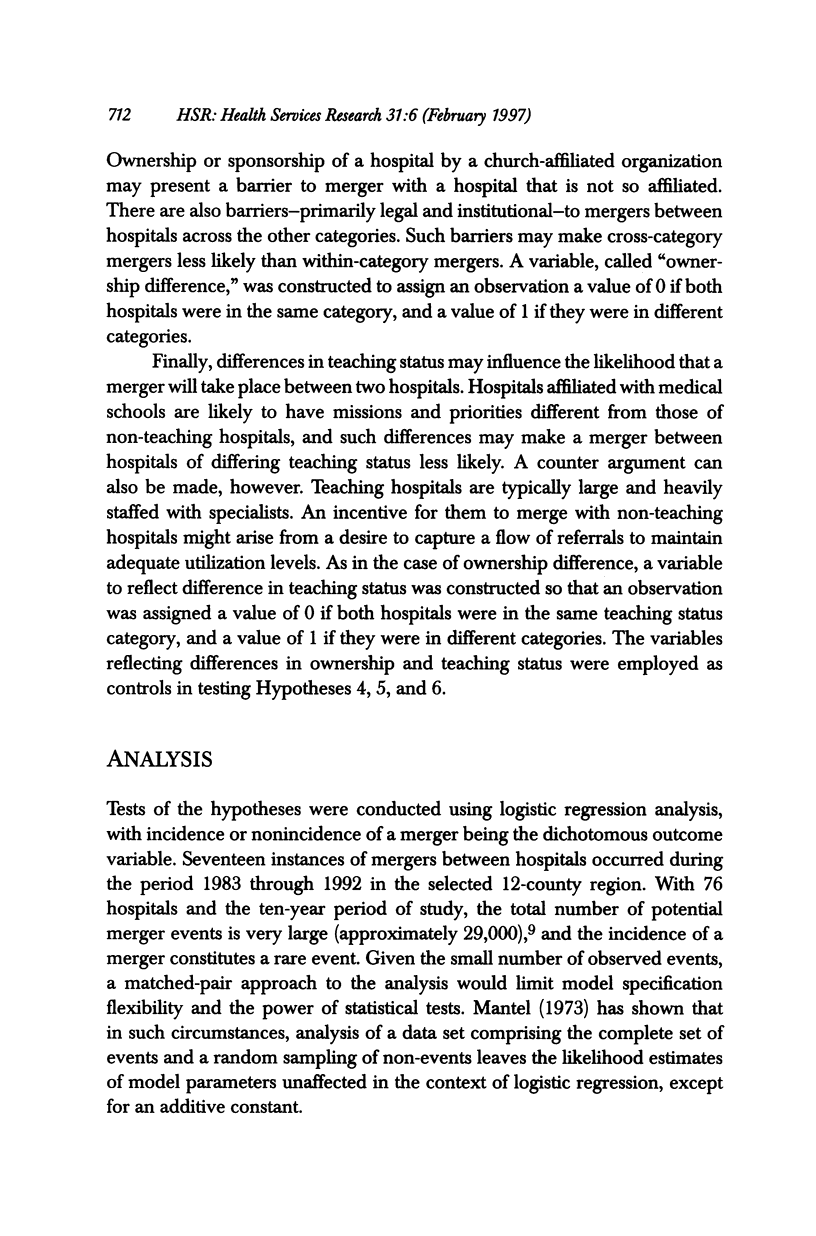
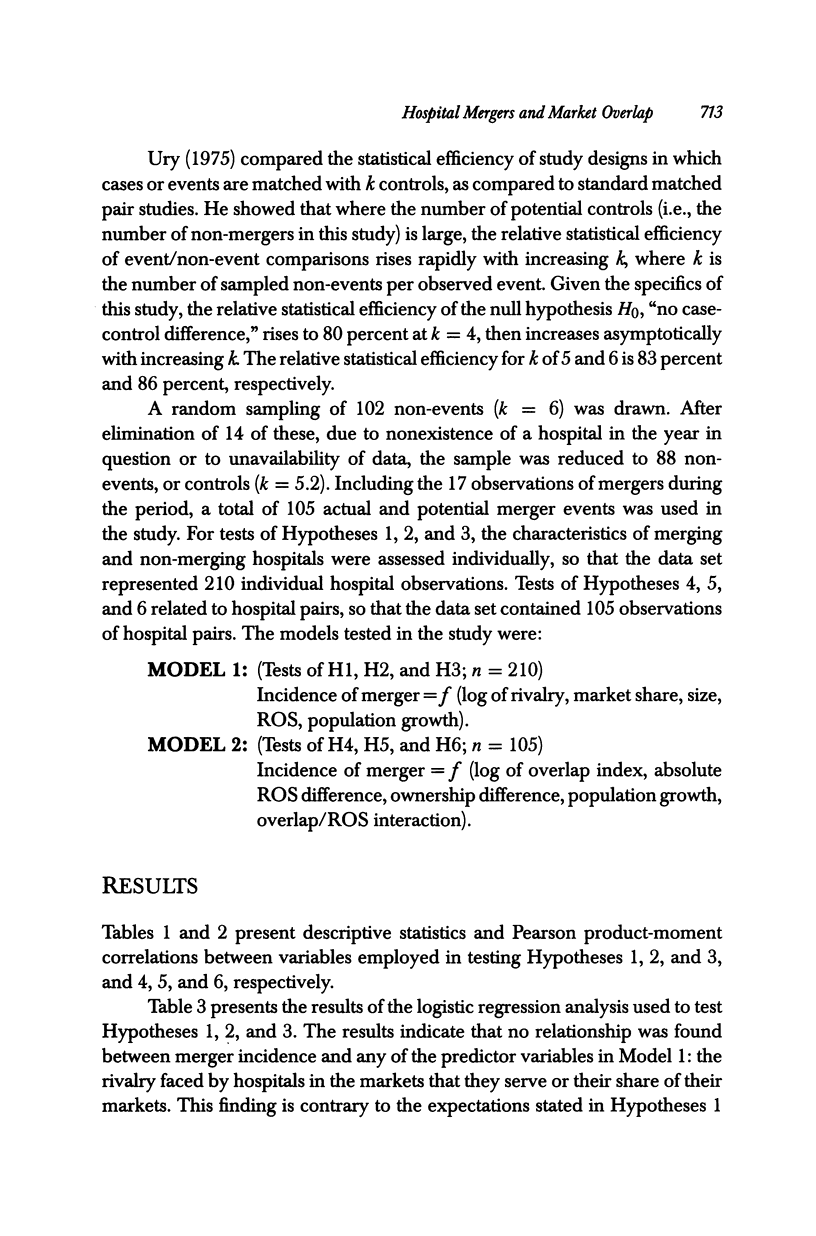
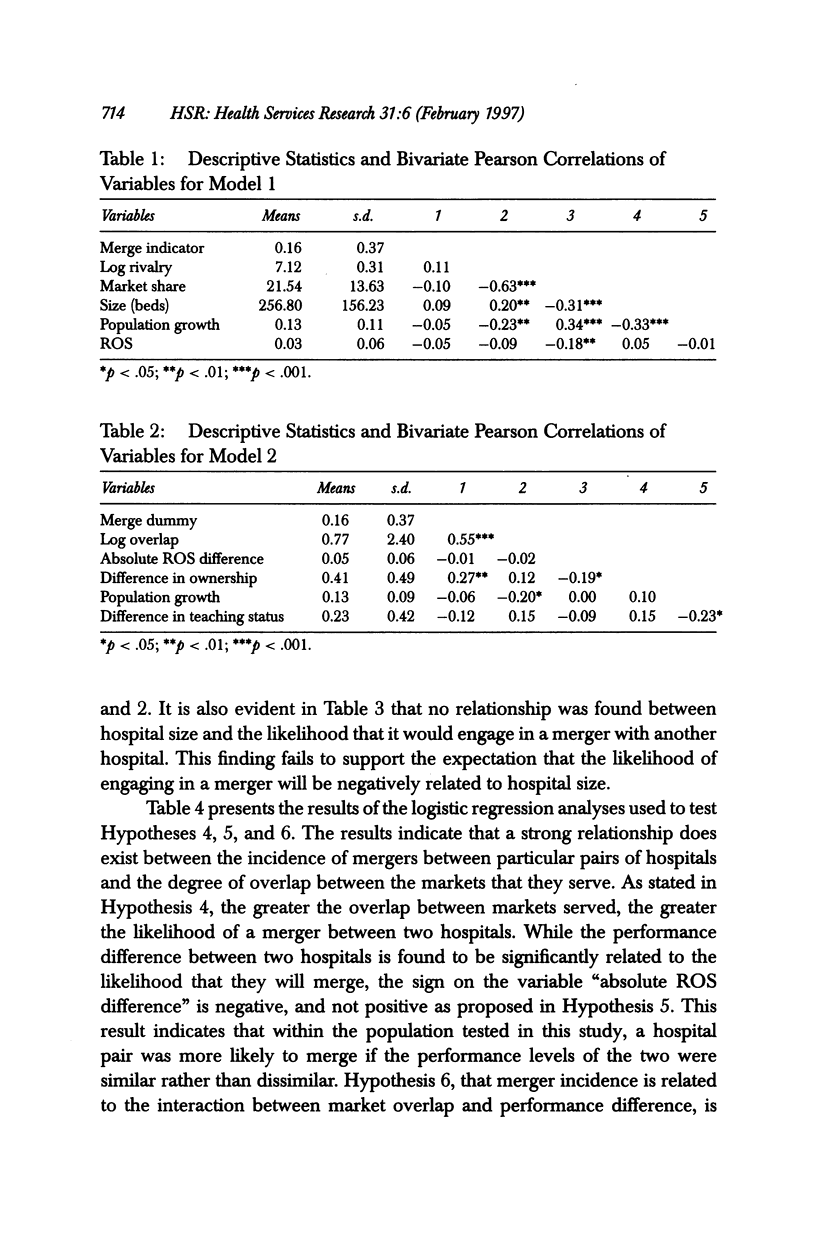
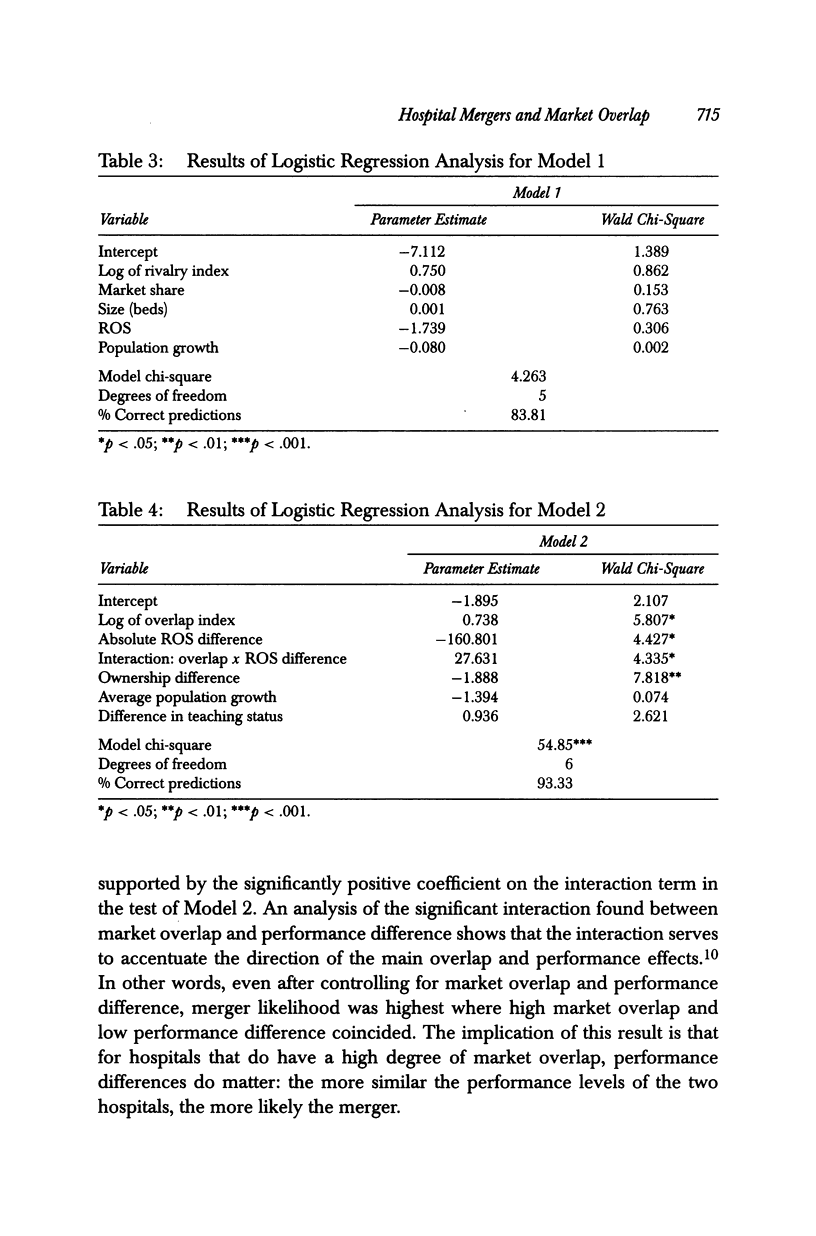
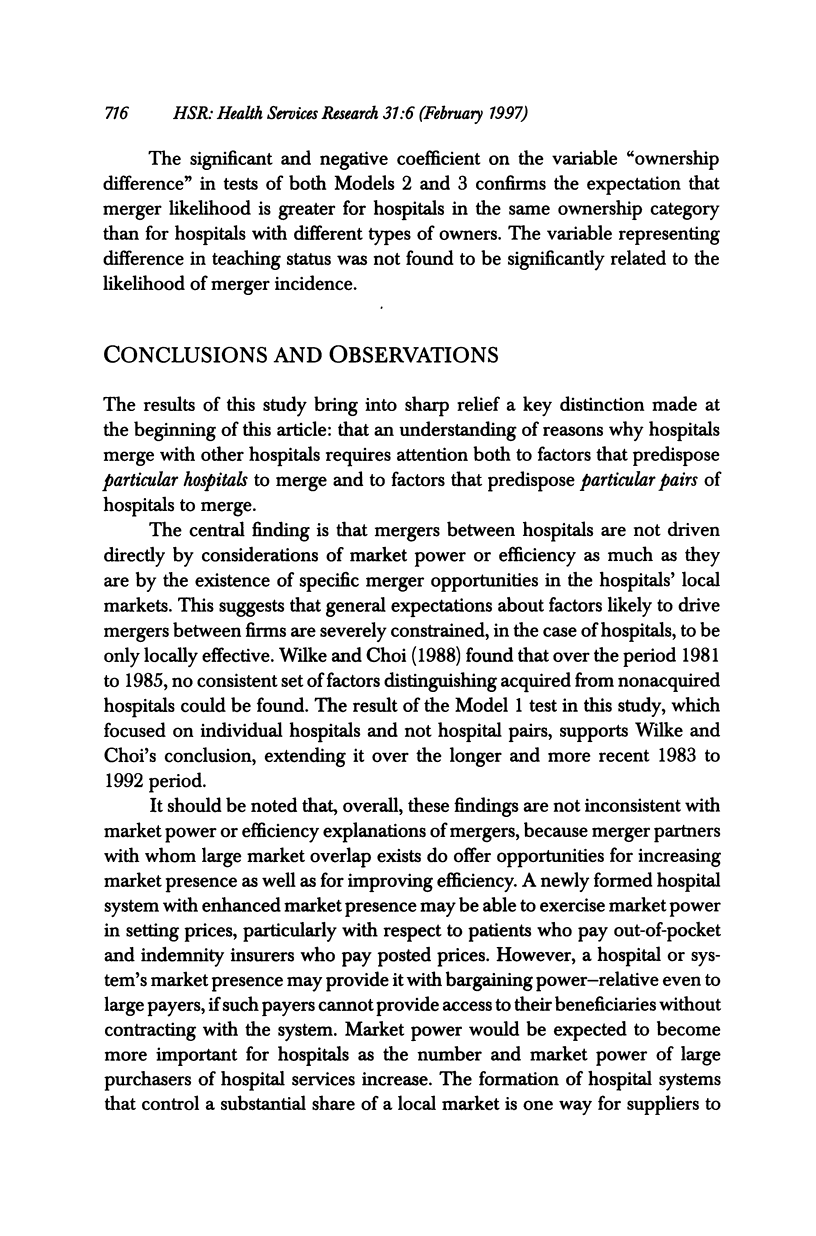
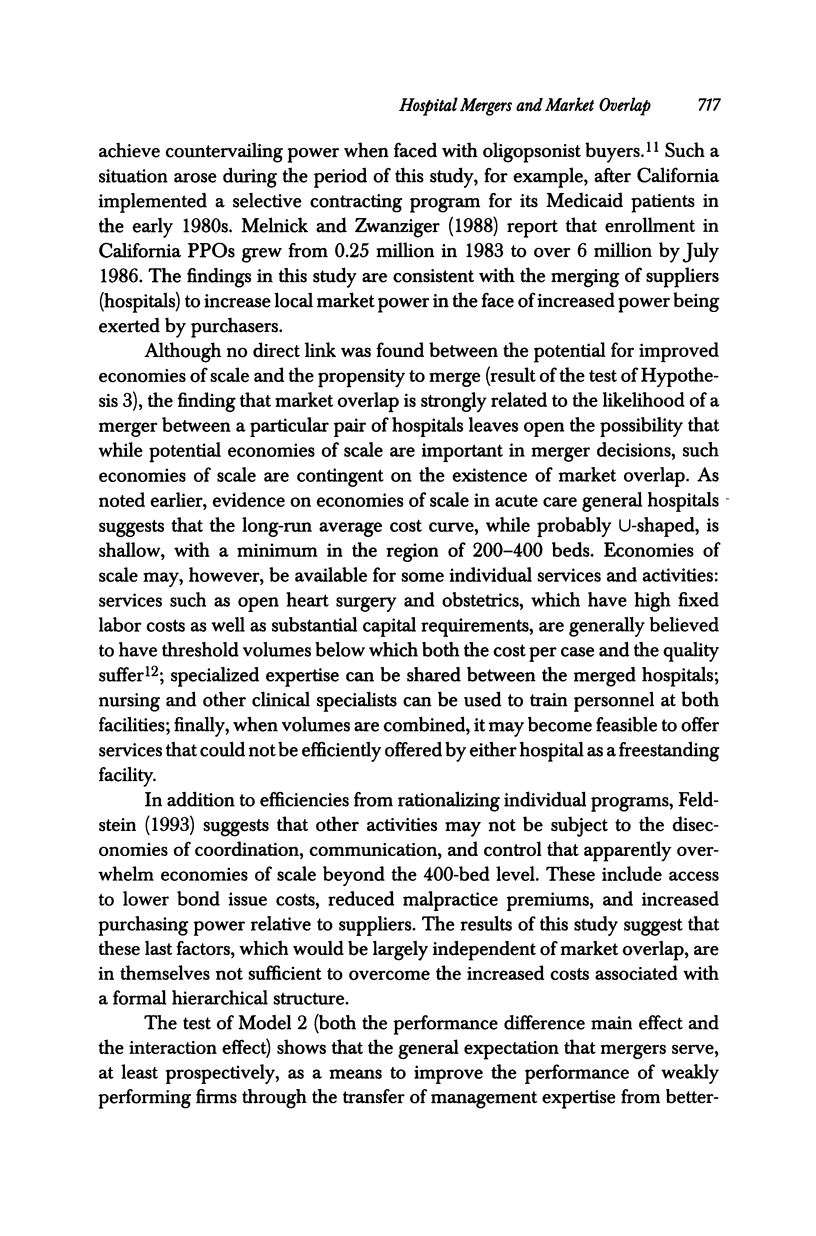
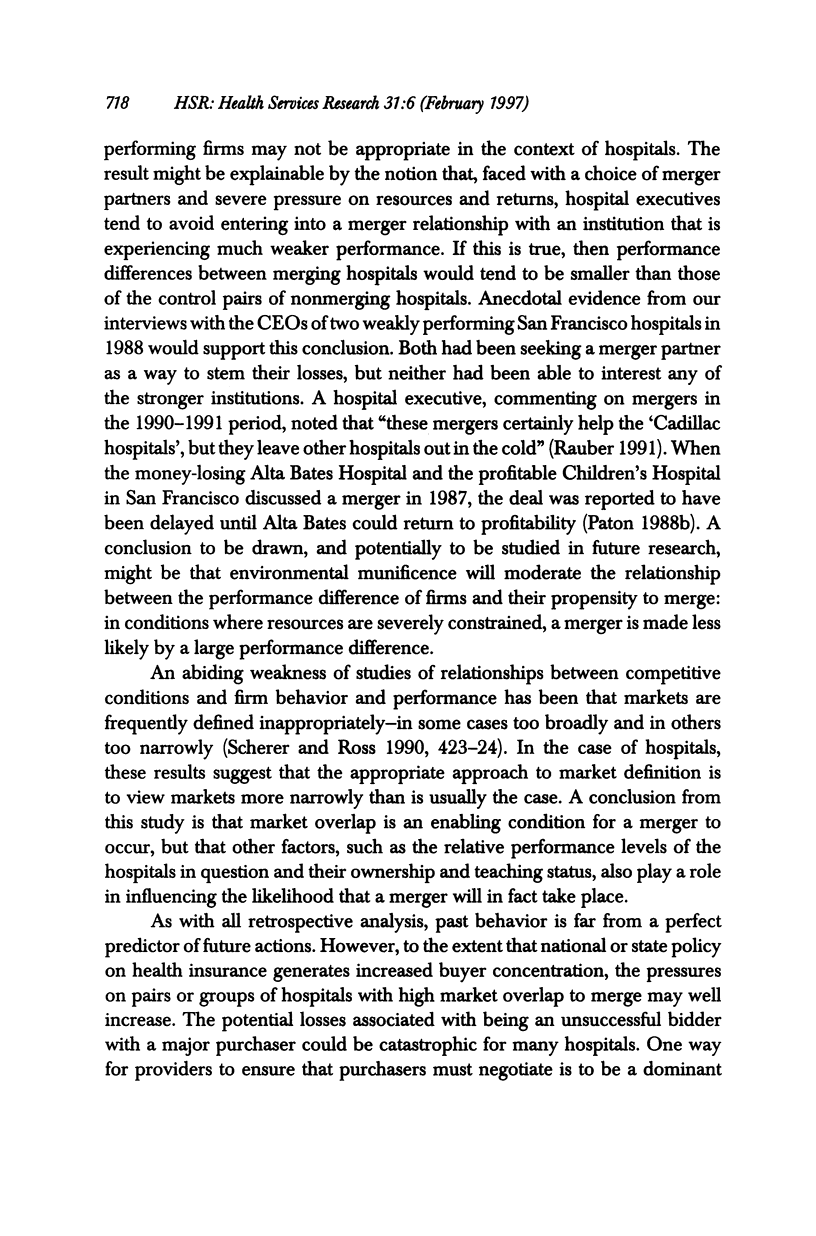
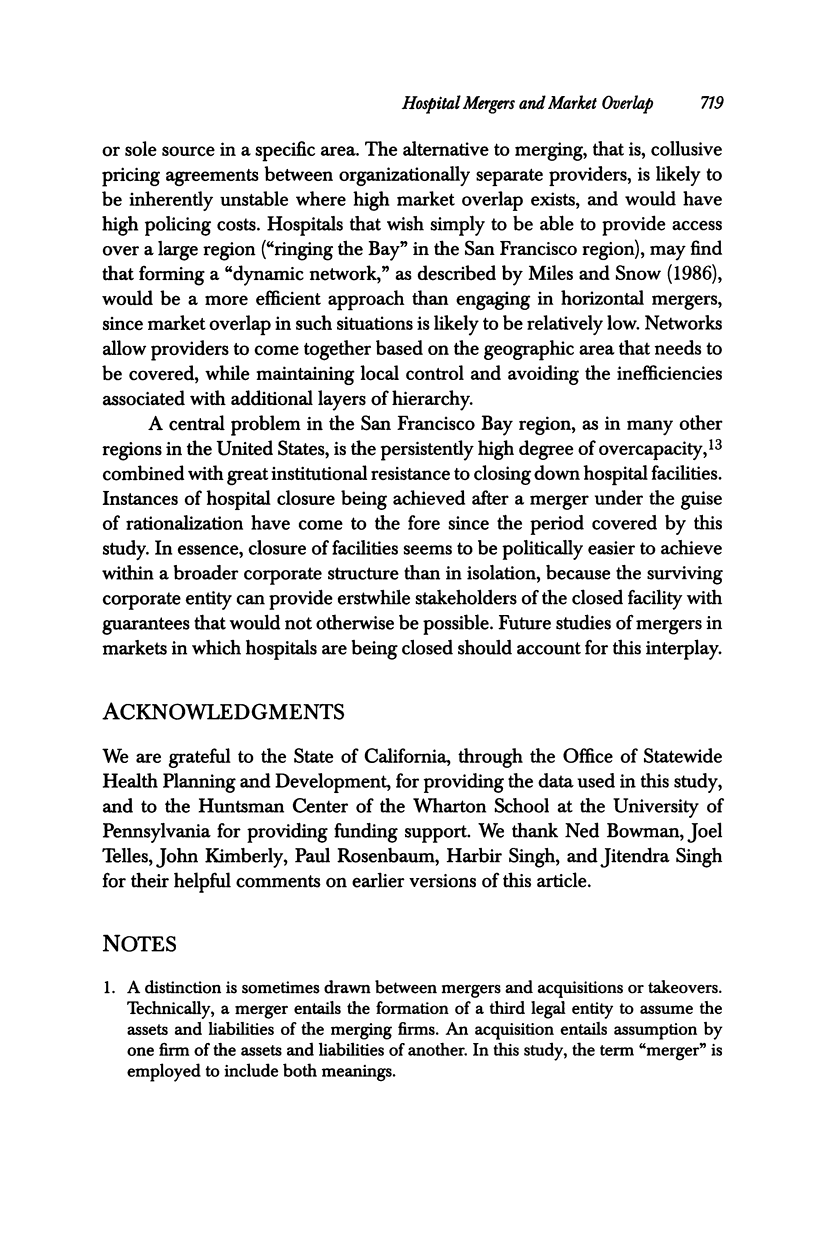
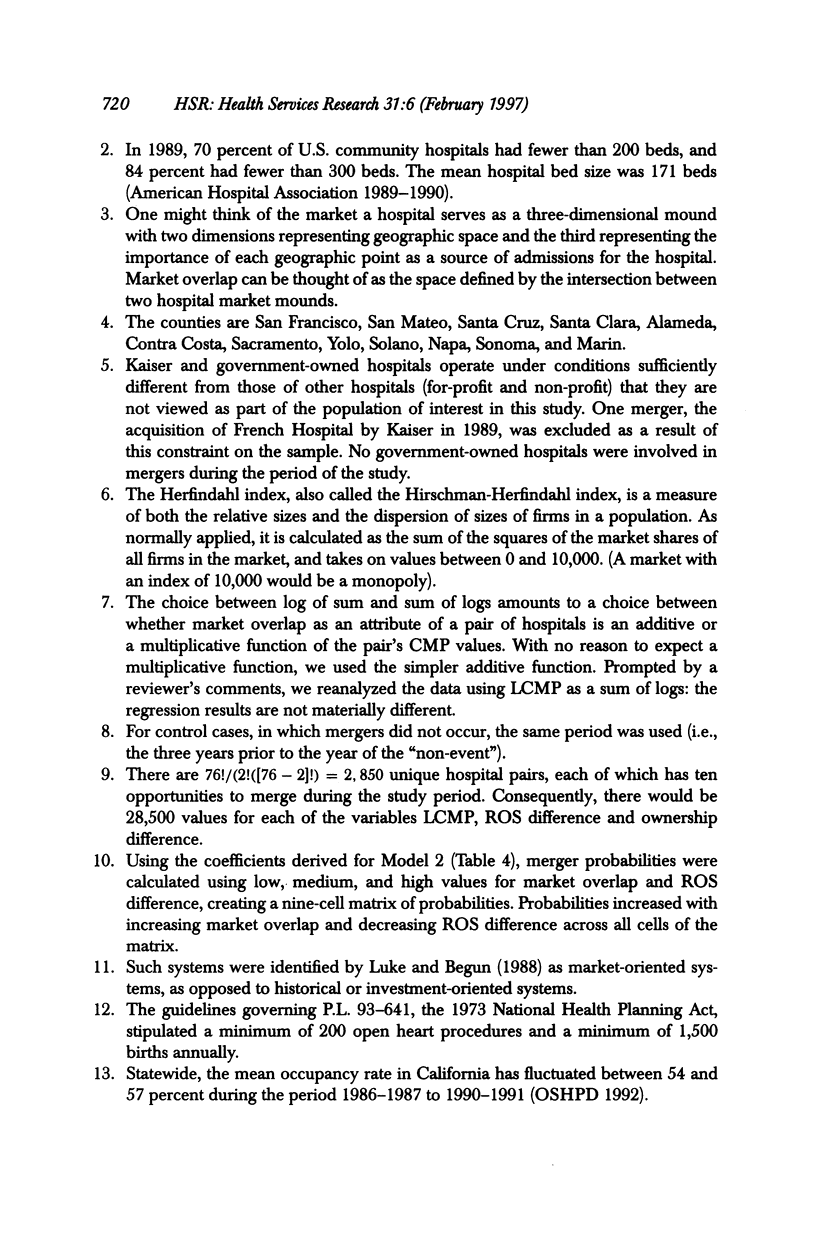
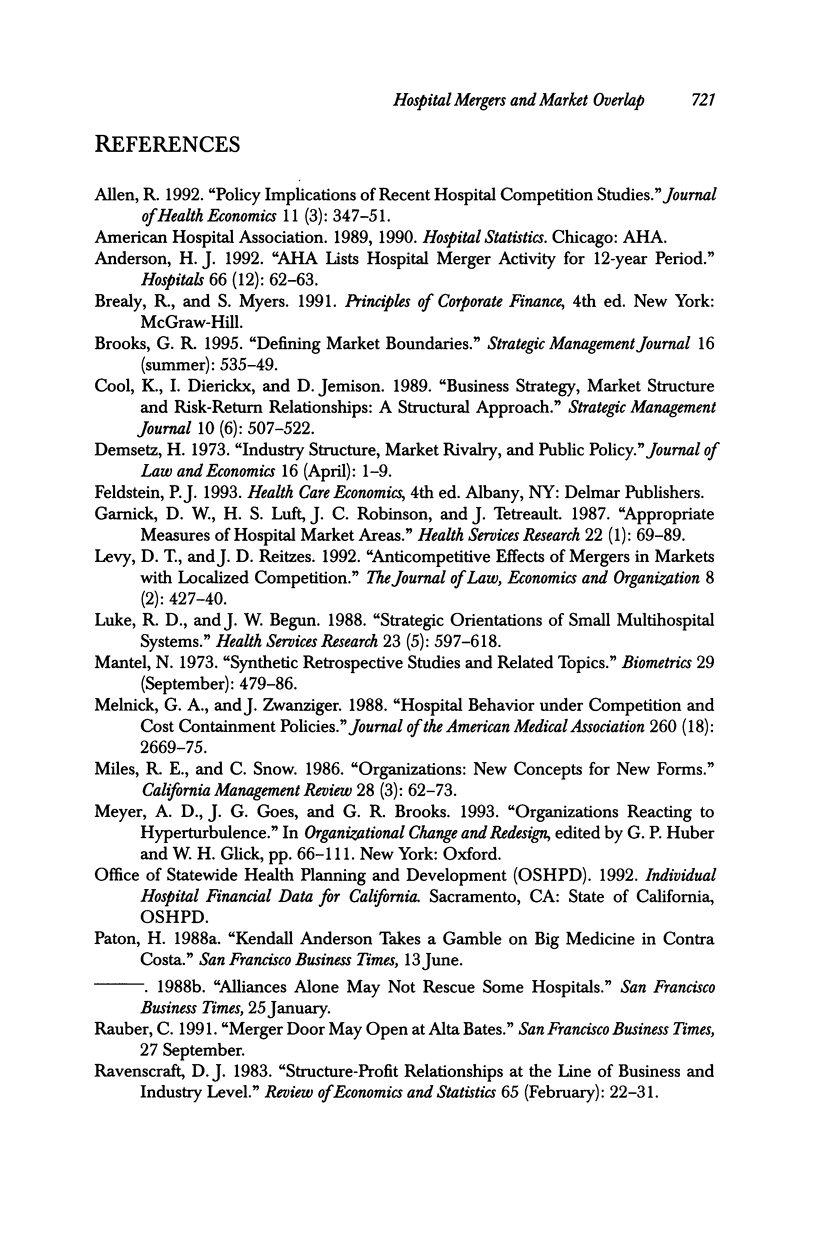
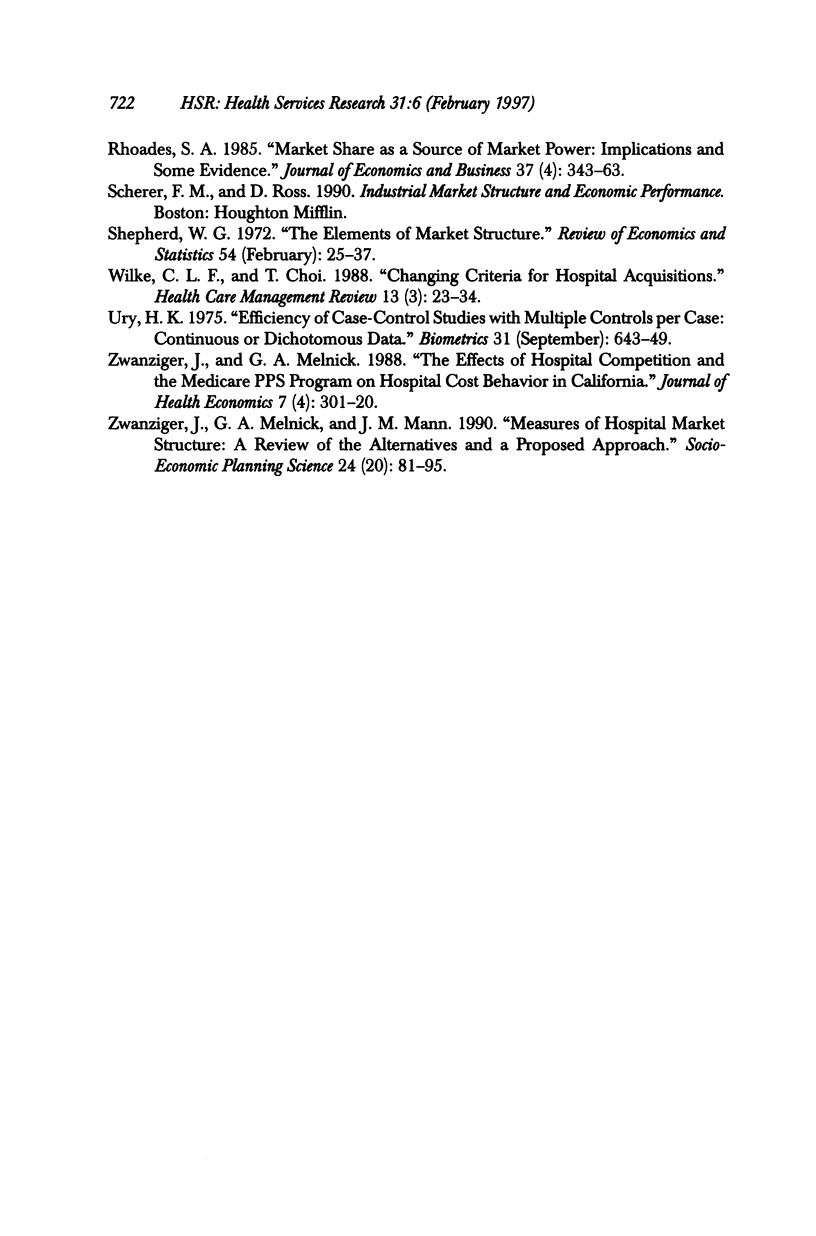
Selected References
These references are in PubMed. This may not be the complete list of references from this article.
- Allen R. Policy implications of recent hospital competition studies. J Health Econ. 1992 Oct;11(3):347–351. doi: 10.1016/0167-6296(92)90008-o. [DOI] [PubMed] [Google Scholar]
- Anderson H. J. AHA lists hospital merger activity for 12-year period. Hospitals. 1992 Jun 20;66(12):62–63. [PubMed] [Google Scholar]
- Garnick D. W., Luft H. S., Robinson J. C., Tetreault J. Appropriate measures of hospital market areas. Health Serv Res. 1987 Apr;22(1):69–89. [PMC free article] [PubMed] [Google Scholar]
- Luke R. D., Begun J. W. Strategic orientations of small multihospital systems. Health Serv Res. 1988 Dec;23(5):597–618. [PMC free article] [PubMed] [Google Scholar]
- Mantel N. Synthetic retrospective studies and related topics. Biometrics. 1973 Sep;29(3):479–486. [PubMed] [Google Scholar]
- Melnick G. A., Zwanziger J. Hospital behavior under competition and cost-containment policies. The California experience, 1980 to 1985. JAMA. 1988 Nov 11;260(18):2669–2675. [PubMed] [Google Scholar]
- Ury H. K. Efficiency of case-control studies with multiple controls per case: continuous or dichotomous data. Biometrics. 1975 Sep;31(3):643–649. [PubMed] [Google Scholar]
- Wilke C. L., Choi T. Changing criteria for hospital acquisitions. Health Care Manage Rev. 1988 Summer;13(3):23–34. [PubMed] [Google Scholar]
- Zwanziger J., Melnick G. A., Mann J. M. Measures of hospital market structure: a review of the alternatives and a proposed approach. Socioecon Plann Sci. 1990;24(2):81–95. doi: 10.1016/0038-0121(90)90014-x. [DOI] [PubMed] [Google Scholar]
- Zwanziger J., Melnick G. A. The effects of hospital competition and the Medicare PPS program on hospital cost behavior in California. J Health Econ. 1988 Dec;7(4):301–320. doi: 10.1016/0167-6296(88)90018-5. [DOI] [PubMed] [Google Scholar]


